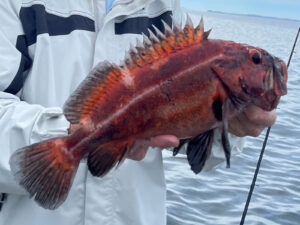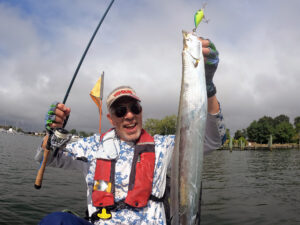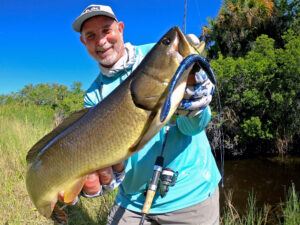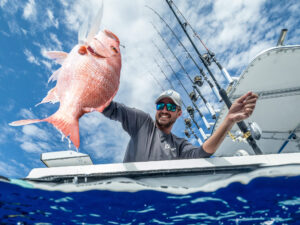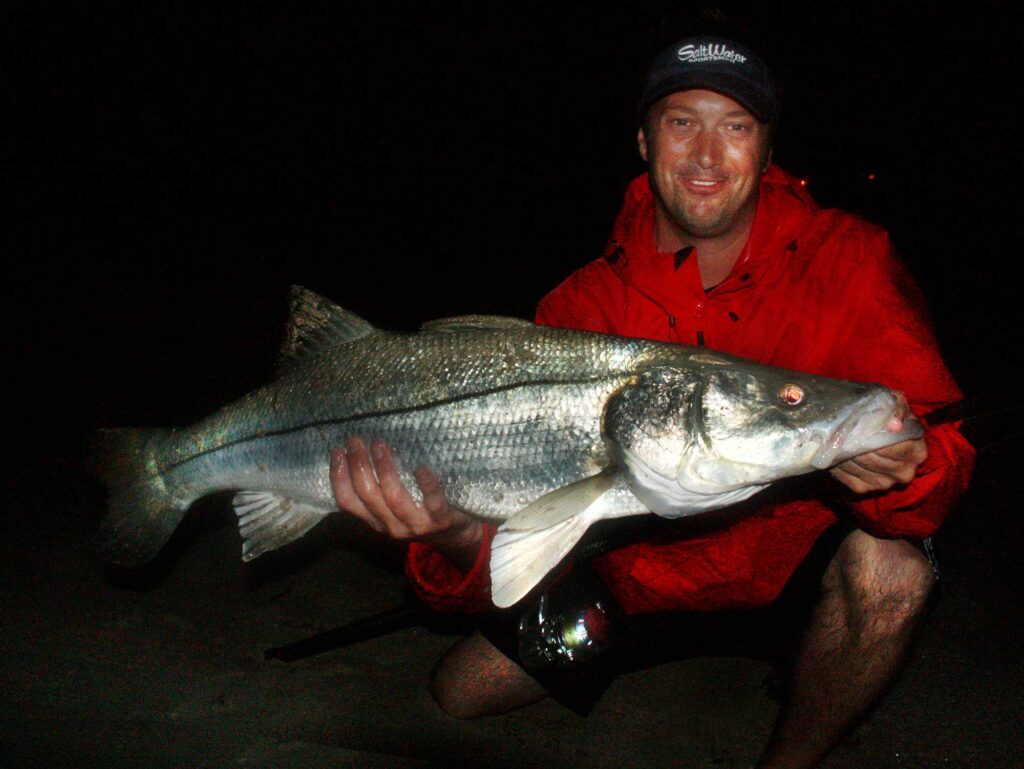
Forty knot southeast winds drove torrential rains into our faces, soaking us to the bone at 2 a.m. in the dark of night. Crazy Alberto Knie and I were working one of Florida’s inlet jetties, punching 1-ounce bucktails through the spitting snot, fully realizing nobody with any sense would be out on the jetty rocks targeting snook during the ungodly hour and conditions.
The casts barely made it past the rod tip, plunking only 20 feet from the rocks into white-capped froth. Once the slack line was reeled up, my bucktail only sat 10 feet from the jetty rocks. A quick twitch, a little lift of the rod, and the magic happened — every time. In a three-hour span, Crazy Alberto and I landed 17 snook, all between 8 to 36 pounds, one cast after another.
Was this just a lucky night? Or are there serious snook secrets to be learned about Florida’s inlet jetty rocks?
Florida East Coast Jetty Fishing
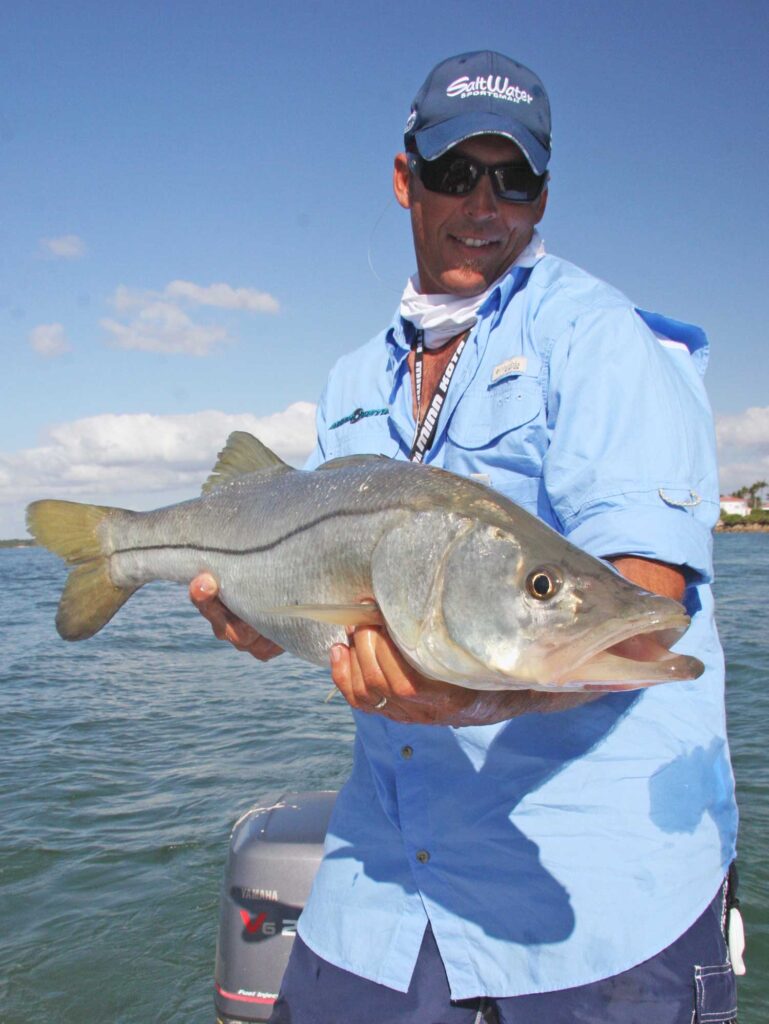
Captain Ed Zyak’s snook playground is the St. Lucie Inlet jetty rocks.
“The prime run of big snook at St. Lucie Inlet is during the spawn, mainly from June through August, but really stretching from May to September, though you can find fish as early as February,” said Zyak. “They are moving through the inlet during the spawn, and that’s when you can really play catch and release with the spawning fish in the 20- to 40-pound class.”
St. Lucie Inlet’s north jetty rocks are jumbled puzzle pieces, many of which have crumbled down into the inlet channel and along the oceanside waters to provide new underwater structure.
“I tend to fish the incoming tides on the outside of the jetties on the oceanside,” he says, “but on outgoing tides, as the water turns and dumps out, they lay more on the inside notches inside the corners of the jetty rocks.”
Zyak will cast artificial baits off the rocks such as 3-inch soft plastics, fixed on a ½-ounce jighead which he says resembles a sand perch or croaker.
“When there is a lot of boat traffic at the mouth of the inlet rocks, that’s when I go to artificials, as those snook are hunkered down deeper. Cast toward the rock, drift with the tide and give it quick snaps, such as 1-foot hops off the bottom,” says Zyak. “Pressured fish will tend to go for smaller baits like a 4-inch shrimp too. You want to be bombing the bottom with the baits. Sling the bait up-tide, and give it an aggressive hop with slow, sharp twitches.”
Fishing Jetty Rocks for Snook
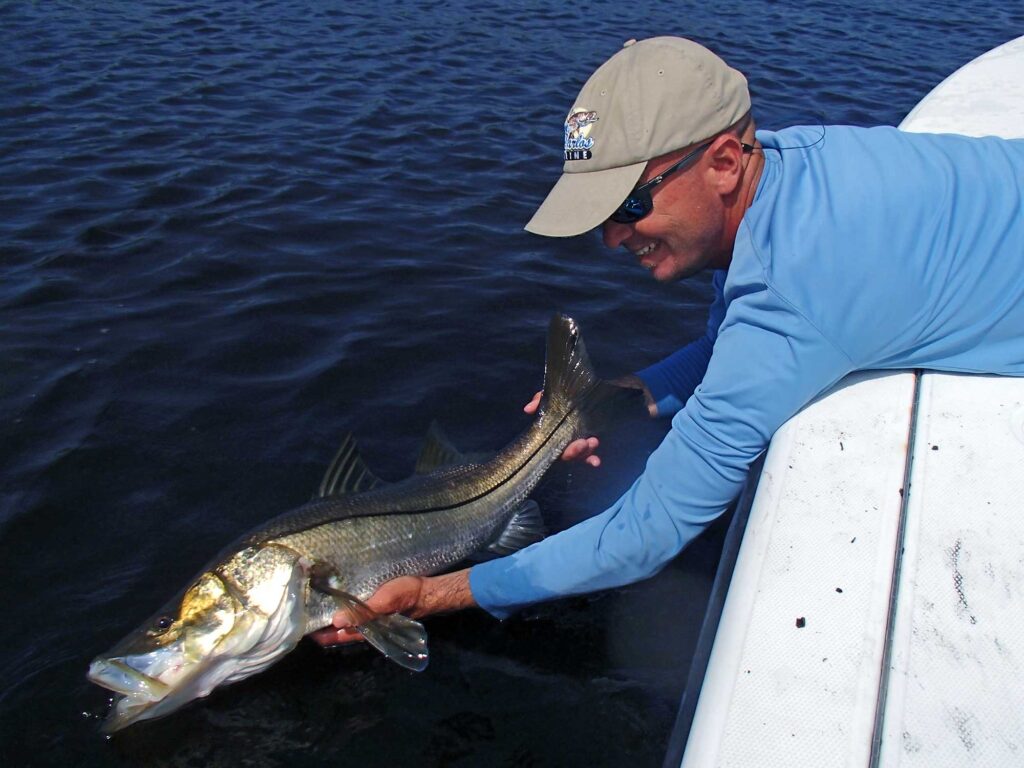
Captain Glyn Austin, of Going Coastal Charters, works Florida’s Sebastian Inlet rocks for his snook success.
“I’ll work the outer jetties via boat July through October, casting bucktails, Rapala X Raps or subsurface baits toward the tip of the north jetty on the outgoing tide,” says Austin. “During the summer months, snook will spread out along the beach as they hang around the pier north tip feeding on glass minnows as they spill out with the tide.”
Austin notes the average size of summer snook run in the 28- to 35-inch range, with larger model fish pushing the 40-inch plus mark. Snook will feed aggressively when water temps are anywhere from the low 70s to high 80s. It can be a year-round bite.
“If winter waters never get below 70, we can have snook along the jetty rocks all winter long.” Austin will also opt to go on the troll when the conditions are right. “I’ll drag lipped Rapalas around the tip of the north jetty and along the oceanfront to find snook lying close to the rocks.”
Livebait fishing for Snook at Jetties
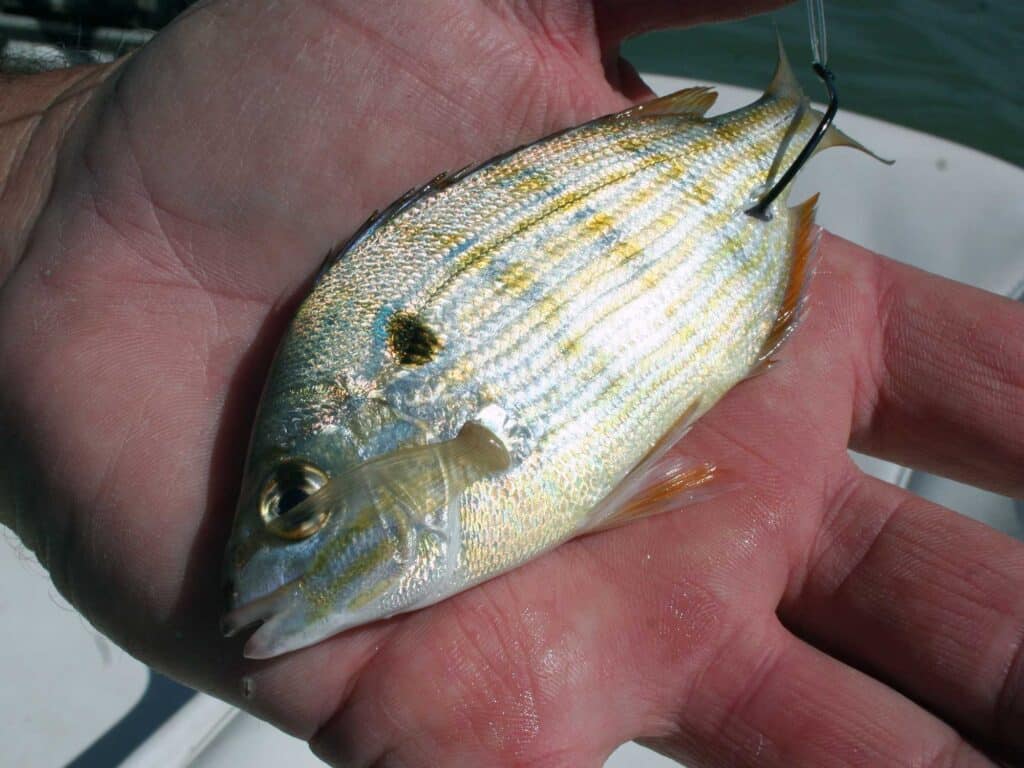
“Live bait really works best when there is minimal boat traffic and less pressure,” says Zyak. “When drifting the inlet with live bait, I like to get up high on the boat to get a visual of the snook — you can see their shadows lying on the bottom behind rocks and off the jetty.”
Don’t be afraid to check the dock or bridge pilings right inside inlet areas, not far from the rocks. When fishing around docks, or when the water is dirty in the inlet, try using side scan imaging to locate snook.
For live baiting, Zyak usually goes with threadfin herring, pilchards or live croakers, but notes croakers are best as they seem to be genetically programmed to swim straight to the bottom. Zyak’s drift rig consists of 30-pound braid main line to a 48-inch section of 50-pound Seaguar fluorocarbon, then a loop knot to size 4/0 or 6/0 Eagle Claw Trokar hooks. Zyak hooks the bait right under the bridge of the nose or underneath the belly just in front of the tail. He freelines the bait without any weight.
“Usually we are fishing 6 to 12 feet of water, and the bait swims straight down.” Average size snook are 10 to 25 pounds at St. Lucie Inlet, with Zyak recommending you concentrate your efforts around the approaching new moon for best results.
“I will also look for structure around inlet areas,” adds Zyak. “Those fish will come off the inlet rocks and explore the immediate area. When I find a nice piece of structure like a fallen tree or submerged rocks, I spot-lock the boat with my trolling motor and pitch baits back to it.”
Drift Fishing Inlets for Snook
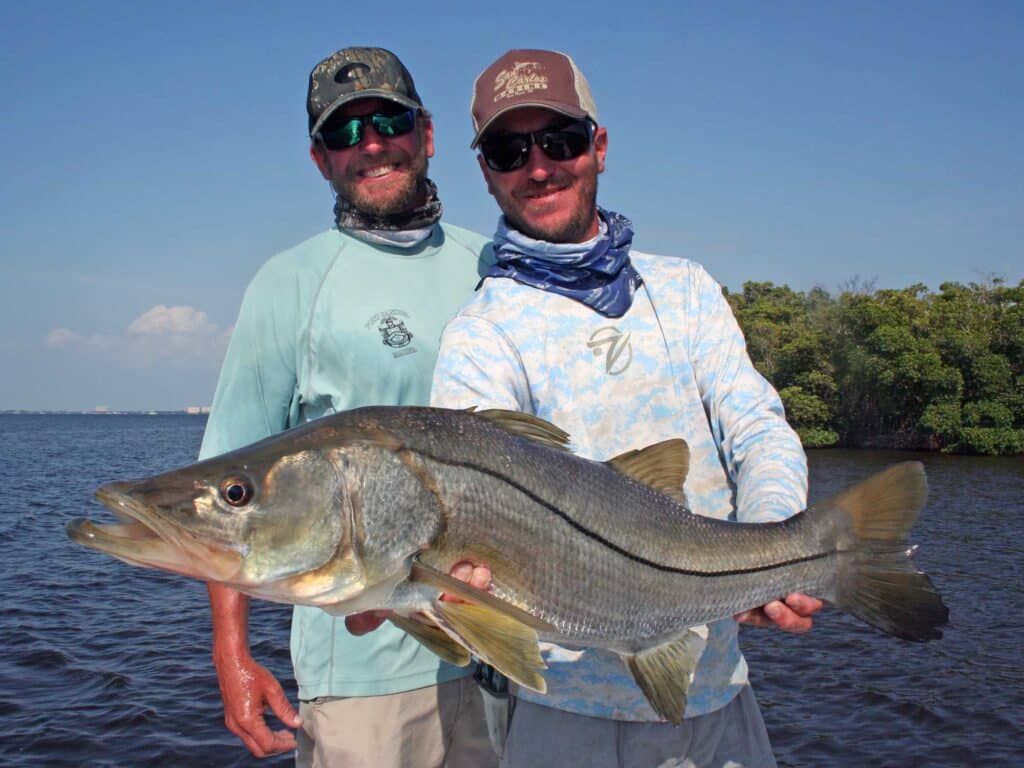
Captain Austin also likes to drift live baits inside the inlet waters when the conditions are right.
“Snook stacked up along the bridge fenders and outgoing tides are best to fish with live bait,” says Austin. Live pinfish or pigfish are his preferred baits, with the rig consisting of 30-pound-braid running line, a surgeon knot tied to a 24- to 36-inch section of 40- to 50-pound fluorocarbon leader, and then a size 5/0 to 6/0 VMC circle hook to finish it off. He will pinch a ½- to 1-ounce split shot about a foot above the bait to get it down into the zone.
“Sebastian has about 12- to 15-foot depths in the middle of the channel, so I will motor up about 2/3 of the way back into the inlet, up to the bridge, then make the drift,” he says. “The bottom structure is very sticky inside the inlet with plenty of rock hang ups, but the key is to drift into the holes between rock boulders.”
Find the right balance between bouncing over the rocks while still letting the bait near the bottom without snagging. Though morning and afternoon hours are prime times, Austin suggests not to overlook drifting live baits during the night hours.
“Those nighttime shifts are also real solid for guys fishing around the south jetty, with both live baits and bucktails,” he says. “You’d be surprised how hot that action can get in the middle of the night.”
My magical night casting bucktails on the rocks opened up a whole new world of snook fishing for me. Mangroves, fallen trees and docks are notorious snook haunts, but next time you’re milling around any inlet jetties that line Florida’s East and Gulf coasts, start thinking about rockin’ some snook.

